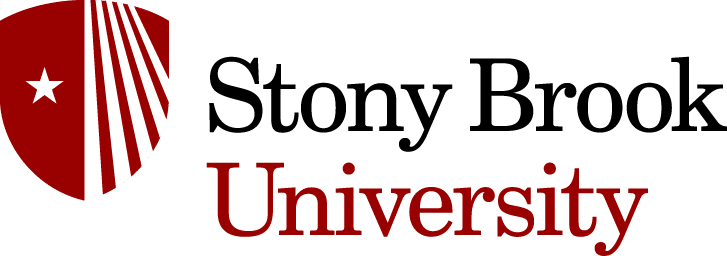Aligning Learning and Transformation with Business Goals: Your Practical Guide to Strategic Success
If you want your Learning & Development (L&D) efforts to drive real business transformation, aligning learning initiatives with your company’s strategic goals isn’t just an option—it’s essential. As corporate learning leaders, you’re tasked with guiding your organization through periods of change and transformation, which requires strategic focus and seamless execution. But where do you begin?
Don’t worry—we’ve got you covered. Here’s a practical, easy-to-follow framework to help you align transformative learning with your business objectives and create lasting impact.


The Strategic Alignment Framework: Your Playbook for Learning and Transformation Success
1. Get to Grips with Business Goals: What’s the Big Picture?
Before launching any learning program, you need to understand where your business is headed. What are your company’s short-term and long-term transformation goals? Which market trends or competitive forces will shape your future? By identifying these strategic imperatives, you can align learning with your organization’s transformation journey and ensure it supports your business objectives.
Key Questions to Ask:
- What are our current business priorities?
- How do changes in our industry affect these priorities?
Knowing the answers to these questions allows you to design learning initiatives that directly support your company’s broader business goals and long-term transformation.

2. Map Competencies and Identify Skill Gaps
Once you have a clear view of your business strategy, it’s time to assess the skills within your workforce. What competencies are needed to achieve your goals? Where are the gaps between current capabilities and the skills required for future success? Identifying these gaps is critical for designing learning programs that foster transformation and enable your people to meet evolving business needs.
Key Challenge: Balancing the need to address immediate skill gaps with investing in long-term employee development for sustained transformation.
3. Set SMART Learning Objectives (Get Specific)
Just as you wouldn’t launch a business transformation strategy without clear goals, the same applies to learning initiatives. SMART goals—Specific, Measurable, Achievable, Relevant, and Time-bound—are crucial for aligning learning with your transformation goals. Clearly define what your employees need to learn and achieve to contribute to your organization’s strategic vision.
Things to Consider:
- How will these learning objectives drive transformation and support our business strategy?
- How will we measure success—and what does success look like?
Setting clear learning objectives ensures alignment with your transformation goals and provides a roadmap for employees to follow.
4. Design Engaging Learning Interventions (No Boring Training Allowed)
Learning and transformation are not one-size-fits-all. Your employees have different roles, skills, and learning preferences, so when designing learning programs, be sure to offer a variety of experiences. Think beyond traditional training sessions—incorporate mentorship, hands-on projects, e-learning, and more. The key is to address skill gaps in a way that motivates and engages employees to embrace the transformation process.
Things to Consider:
- How can we make learning accessible, engaging, and relevant for all employees?
- What type of learning interventions will deliver the biggest transformation for each team or department?
5. Roll Out Your Learning Plan (And Make It Count)
Now it’s time to put your learning plan into action. Launch your initiatives with the right resources, support, and clear communication to ensure everyone understands how their learning relates to the organization’s transformation goals. When employees understand the broader context and see how their growth supports business success, they’ll be more motivated to engage in the learning process.
Pro Tip: Leadership support is critical. When leadership champions the importance of learning, it helps build a company-wide culture of transformation and learning.

6. Monitor Progress and Measure Impact (This Is a Continuous Process)
You can’t just launch a learning initiative and expect transformation to happen automatically. To ensure your learning programs are closing skill gaps and driving business transformation, you must consistently monitor progress. Use key performance indicators (KPIs), gather feedback from employees and managers, and adjust your strategy as needed to stay on track.
Challenge: Measuring the direct impact of learning on business transformation can be tricky, but with the right tools and data, it’s definitely achievable.
7. Build a Culture of Continuous Learning (Because Transformation Never Stops)
The most successful learning and transformation strategies don’t end with one-off training programs. They foster a culture of continuous learning, where employees are motivated to take ownership of their own development. Encourage ongoing learning, offer opportunities for personal growth, and celebrate milestones that align with business transformation goals. Keep the momentum going by ensuring leadership remains committed to the learning culture.
- Critical Success Factor: Leadership buy-in is essential. Without it, a culture of learning and transformation won’t take root.
- Overcoming Common Challenges (And How to Tackle Them)
- No strategy is without its challenges. Here are a few obstacles you might face in aligning learning with business transformation—and how to overcome them:
- Balancing immediate vs. long-term needs: Prioritize urgent skills while also investing in future capabilities to drive long-term transformation.
- Ensuring accessibility and relevance: Make learning flexible, personalized, and relevant to employees across different roles and levels.
- Measuring the impact: Use data and feedback to track the return on investment (ROI) of learning and demonstrate its role in driving business transformation.
- Sustaining a learning culture: Building a culture of continuous learning takes time. Make sure leadership is engaged and vocal about its importance.
- Securing leadership support: Learning initiatives are more successful when you make a compelling case for how they contribute to business transformation goals.
How Echo360 Can Help You Achieve Alignment
Aligning learning with business transformation doesn’t have to be complex. At Echo360, we provide the tools to make this process seamless and impactful. From tracking progress to delivering engaging content, our platform helps you drive business outcomes through strategic learning and transformation. Explore how Echo360 can support you in aligning your learning initiatives with business transformation goals—and make a real, lasting impact.
Are you interested in the Learning Transformation PlatformTM (LTPTM)
Leading educational institutions are inspiring learning with Echo360.

















